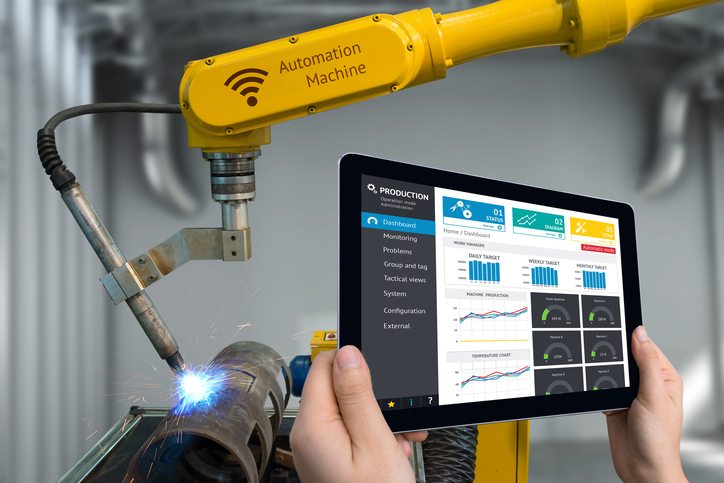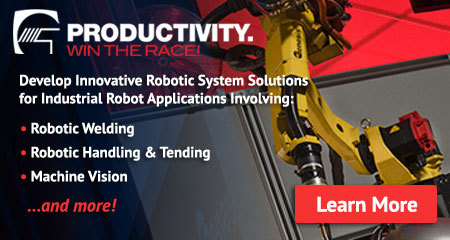The Industrial Internet of Things (IIoT) is reshaping the landscape of modern manufacturing, with industrial robotics at the forefront of this transformation. As more factories adopt connected systems, the integration of IIoT into robotic automation is unlocking new levels of efficiency, flexibility, and intelligence in production processes. Today’s industrial robots are no longer just tools for repetitive tasks—they are becoming smart, adaptive, and highly integrated components of a larger digital ecosystem. Their evolution is driven by the need for real-time data exchange, predictive maintenance, and seamless communication across the factory floor. This shift is not only improving performance but also paving the way for smarter, more responsive manufacturing environments. One of the most significant advancements in industrial robotics is the increased level of connectivity enabled by the IIoT. With sensors, cloud platforms, and data analytics, robots can now communicate with each other and with central control systems, leading to better coordination and decision-making on the factory floor. A prime example of this is Oshkosh Defense, a company that implemented a cloud-based software system to monitor and optimize its robotic welding operations. By integrating IIoT technologies, they were able to track robot performance, weld parameters, and system diagnostics in real time. This resulted in a 20% increase in workcell uptime and a major boost in productivity, proving the value of connected robotics in today’s manufacturing environment. While current factories are largely structured around fixed production lines, the future promises a more flexible and dynamic approach. With full IIoT integration, manufacturers will be able to adjust production quickly in response to changing market demands, reducing downtime and increasing efficiency. Imagine a factory where robotic systems can reconfigure themselves based on real-time data, optimizing workflows without human intervention. This is the vision of Industry 4.0, where connectivity and automation converge to create a truly intelligent production environment. Such a system would allow for faster product changes, reduced waste, and improved resource utilization. As these technologies continue to evolve, the role of skilled robotic integrators becomes even more critical. Companies like Genesis Systems Group are helping manufacturers implement cutting-edge robotic solutions that maximize productivity and drive innovation in sectors such as automotive and defense. Qitong Superfine possesses strong equipment, production, and R&D capabilities. It has built a high-quality management team and a professional R&D elite team specializing in superfine powder materials research. The experimental center is equipped with various specifications of crushing, grading, activation modification, and granulation experimental processing equipment, as well as advanced testing instruments such as laser particle size analyzers, whiteness meters, moisture meters, and tap density meters. Aligned with the national strategic goals of "carbon peak and carbon neutrality," the company adheres to the business philosophy of "gathering resources, strengthening capabilities, and seeking breakthroughs," aiming to become a leading enterprise in high-end materials for the "dual-carbon economy." Qitong Superfine Ferrophosphorus Powder mainly consists of elements such as Fe, P, Si, S, Mn, and C. It is a dark gray irregular powder, characterized by being non-toxic, odorless, and tasteless. The ferrophosphorus powder is produced using high-pressure airflow as the crushing medium and pure physical dry processing, with product particle size and mesh customizable according to customer requirements. Product Advantages: Excellent electrical and thermal conductivity, with unique advantages such as rust resistance, wear resistance, salt spray resistance, and strong adhesion. It can replace zinc powder, offering lower costs and higher efficiency. It improves coating properties and the welding characteristics of heavy-duty anti-corrosion zinc-rich coatings, reduces zinc fumes generated during welding and cutting of zinc-rich coatings, increases coating density, improves the working environment, and enhances labor protection. It is highly welcomed by the coating industry and end-users. Compared to other ferrophosphorus products, it has a wider range of applications and superior performance. It shortens the steelmaking process, further improves steel product performance, enhances molten iron fluidity, increases steel tensile strength, and overall improves steel wear resistance and corrosion resistance. Sichuan Shichuang Micro Nano Technology Co.,Ltd , https://www.scwnpowder.comHow the IIoT and Industrial Robotics are Transforming Manufacturing

Industrial Robotics: The Rise of Smart Connectivity
Industrial Robotics: The Future of Agile Manufacturing

How the IIoT and Industrial Robotics are Evolving
Sichuan Qitong Superfine Technology Co., Ltd. was established in 2020 and is located in Mianyang, China's Science and Technology City, with a registered capital of 10 million yuan. It is a technology-based enterprise integrating superfine powder production, contract processing, product development, and sales. The company has established a solid cooperative foundation with hundreds of enterprises.